#nematomorpha
Text
go to the water, o locust! your thirst is unquenchable, and i am so alone coiled in your abdomen. sit and drink by the muddy ephemeral pond and you will hardly notice when i slip out : )
anyway why was this guy under a log. brother you need to be wet (unidentified horsehair worm, phylum nematomorpha)
#nematomorpha#horsehair worm#but actually why was this guy under a log. it was moist but not wet#parasite
175 notes
·
View notes
Text
Phylum Round 2

Mollusca: Snails, slugs, cephalopods, bivalves, chitons, limpets, and others. This group contains the largest invertebrates, the giant and colossal squids. They are the largest marine phylum, but many members are terrestrial. Although they are incredibly diverse in body shape, all Molluscs generally have a hard "radula" used for eating, a mantle that may secrete a hard shell, and a body mostly composed of dense muscle. These animals can be predators, herbivores, filter feeders, symbiotic, and even parasitic. This phylum exhibits remarkable diversity overall.
Nematomorpha: Horsehair Worms. Until adulthood, all Horsehair Worms are parasites of various insect species. They are mostly freshwater, with a few saltwater species. As the larvae grow into adulthood, many can alter the behavior of their insect hosts by compelling them to fall into bodies of freshwater. When it senses water, the adult worm emerges to spawn. These parasites are important in controlling insect populations, and in some cases, providing a food source for fish. Without them, the effects would cascade down the food chain and lead to shifts in the ecosystem's balance.
#mollusca#nematomorpha#animal bracket#tumblr bracket#bracket tournament#poll bracket#phylum round 2#phylum#cw parasites
54 notes
·
View notes
Text
Taxonomy Tournament: Ecdytes

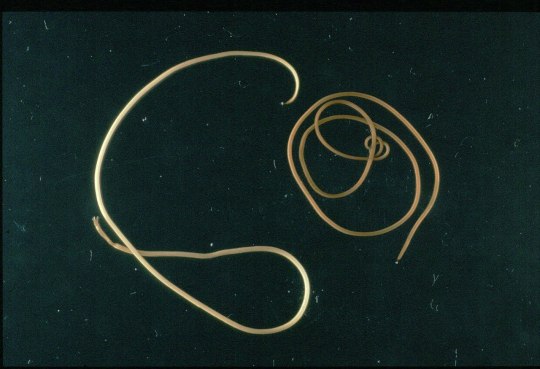
Loricifera. This phylum is made up of microscopic animals that attach themselves to gravel. It is one of the most recently discovered groups, first described in the 1980s
Nematomorpha. This phylum is known as horse-hair worms. The adults are free-living, but larvae are parasites of arthropods
#animals#biology#polls#poll tournament#zoology#ecdytes#Animal parasite#horse-hair worms#worms#Loricifera#Nematomorpha#0x2av0xd5#animal tournament#Animal Tournament Round 1
21 notes
·
View notes
Text
Phylum #13: Nematomorpha, the horsehair worms!
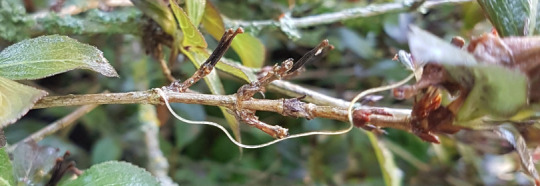
The cousins of roundworms! Much longer and thinner, often macroscopic in size, they get a bad reputation for their parasitic lifestyle. You might have seen videos of huge worms crawling out of an insect - yep, that was them.
But nematomorphs, or horsehair worms, aren't anything evil - no phylum is, really. In fact, the dramatic worm emerging from an insect is only the larva, with the adult living a casual free-living worm life, swimming in the seas or climbing in the trees!
They are also called Gordian worms - referring to the Gordian knot, as they have the habit of coiling themselves in intricate knots. In fact, they are often found like this after emerging from their host, usually several times smaller than themselves. (Details of the parasitic cycle and picture below)
As larvae, horsehair worms will take full control of their host - often a cricket, pushing them to dive into the water where the adult will emerge and lay its eggs. As gruesome as the process can look, the host might survive. Or, on the flip side, get eaten by a predator, in which case the horsehair worm can still wiggle out of the latter's digestive system, perpetuating the cycle.
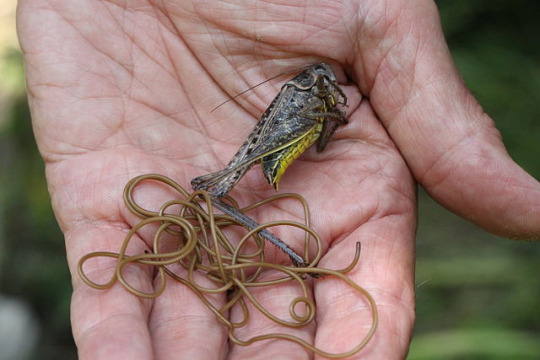
32 notes
·
View notes
Text






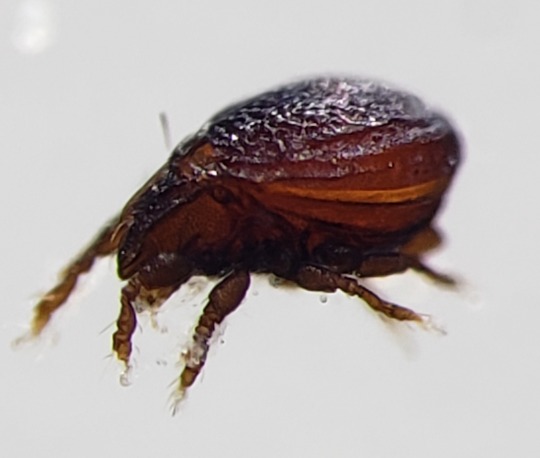



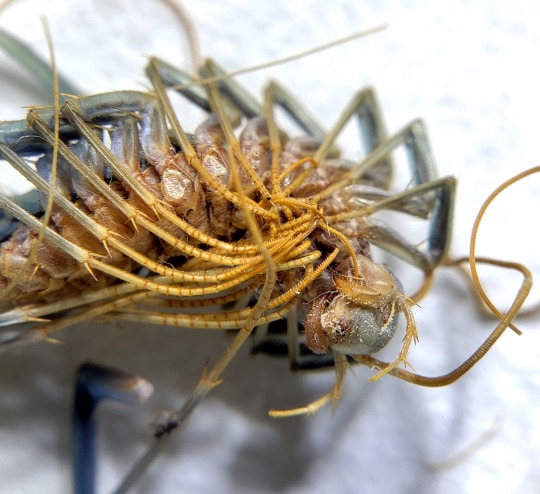



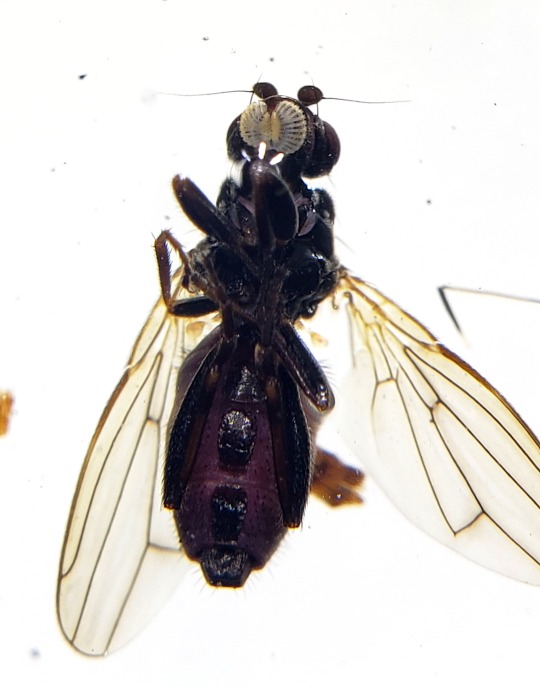
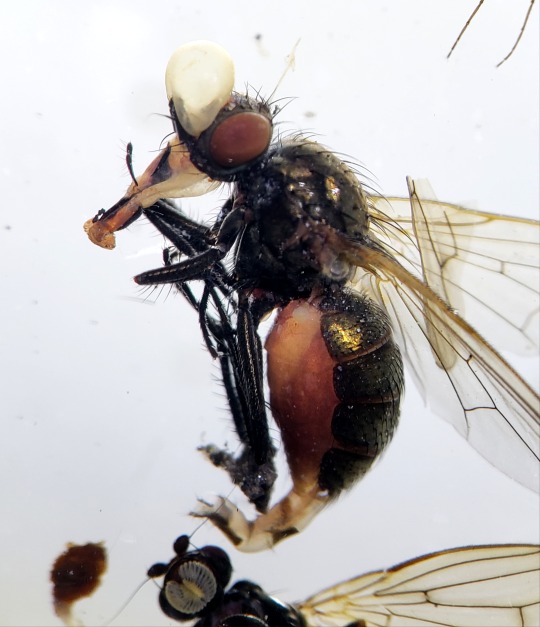
some bugs i saw at work 2.V.2022 - 18.V.2022
#hymenoptera#dryinidae#orthoptera#nematomorpha#coleoptera#histeridae#ditpera#mydidae#curculionidae#cynipidae#acari#orbatidae#diptera#pipunculidae#oestridae#tenebrionidae#chilopoda#Scutigeromorpha#scutigeridae
106 notes
·
View notes
Text

6 notes
·
View notes
Text
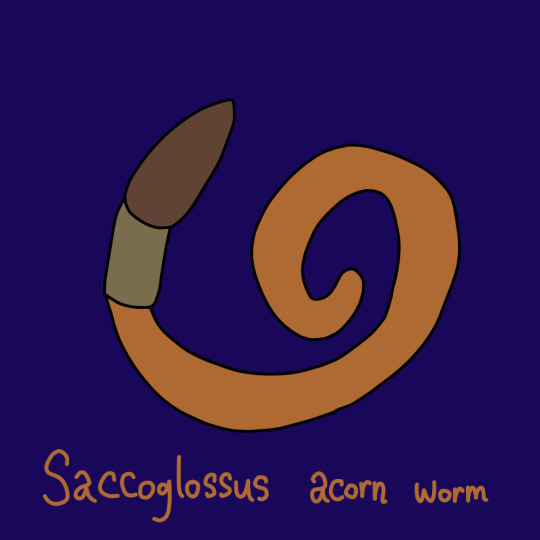
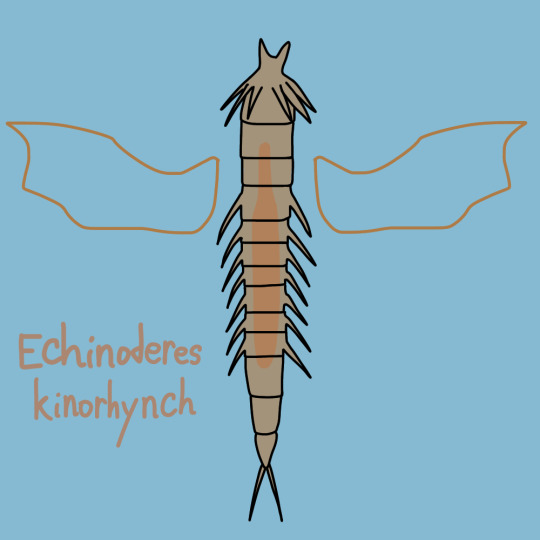
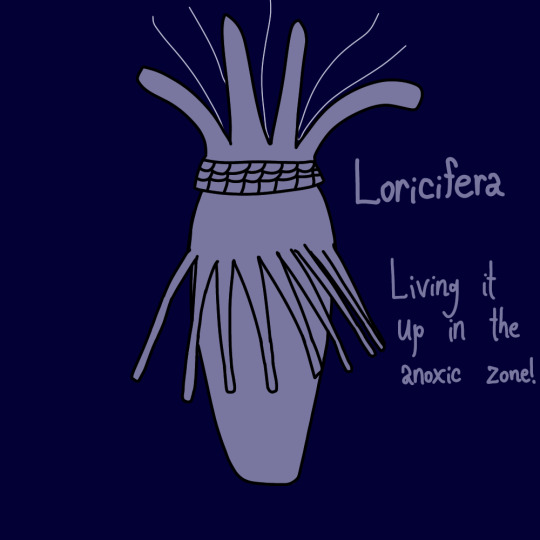
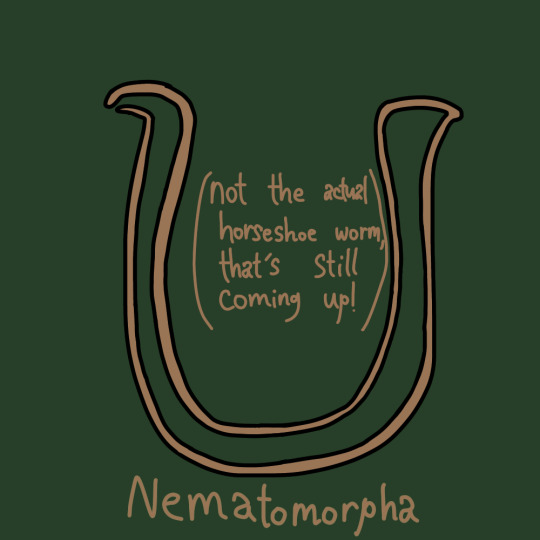


Part 2 of the InverteFest drawings!
The Kinorhyncha one is referencing the phylum’s nickname of “mud dragons”.
[Image description: Six digital drawings of animals from small phyla.
Picture 1: A Saccoglossus acorn worm curled into a loose spiral.
Picture 2: An Echinoderes kinorhynch with silhouettes of dragon wings drawn on either side of it.
Picture 3: A loriciferan with the caption “Loricifera: Living it up in the anoxic zone!”
Picture 4: A horsehair worm curled into a horseshoe shape, with the caption “Not the actual horseshoe worm, that’s still coming up!”
Picture 5: A blue velvet worm with golden/orange spots crawling on a mossy surface.
Picture 6: The actinotroch larva of a phoronid / horseshoe worm.
End ID.]
5 notes
·
View notes
Text

I’ve been wanting to make search and find pages for a while and I’m finally getting around to it! :D
#my art#i spy tarot#i WILL be doing the major arcana idk how long itll take but i will#maybe some of the minor arcana too but idk#also sketching out a few non tarot ones but its harder to do fun borders for those and the fun borders are my favorite part so far#if anyones in the rochester area ill be selling this as a print at RICE in a few weeks!#hopefully also the magician and the sun (lol) and matching stickers!#also other stuff like print nematomorpha and a sketchbook zine BUT THIS ISNT ABOUT THEM#i spy#search and find#tarot#art
25 notes
·
View notes
Text
WAR AND HATE ON PLANET EARTH
WELCOME TO THE PHYLUM PHIGHT
A BRACKET WHERE THE 37 KNOWN PHYLA OF ANIMALS (extant and otherwise) WILL BATTLE TO THE DEATH. ONLY ONE MAY BE CROWNED CHAMPION-- AND ASCEND TO THE STATUS OF KINGDOM (i have this power)
WHO WILL IT BE? THE CHORDATES, CONTAINING EVERY KNOWN VERTEBRATE INCLUDING YOU AND ME? I FEEL LIKE THAT'S A BIAS. MAYBE THE HUMBLE TARDIGRADES, THE INTERNET'S FAVOURITE EXTREMOPHILES? OR WILL IT BE THE PENIS WORMS? I FEEL LIKE IT'S GONNA BE THE PENIS WORMS.
TOURNAMENT STRUCTURE:

ok ditching allcaps now <3
round 0
preliminary face-off between the odd phellas. lasting one (1) week to give bitches time to mobilise
protoarticulata VS rhombozoa
2. phoronida VS vetulicolia
3. petalonamae VS xenacoelomorpha
4. porifera VS rotifera
5. platyhelminthes VS saccorhytida
round 1
all round 1 poll-batches will last one (1) day because dear god there are so many of them. there will however be a cooldown of like, a couple days or something between batches because i am but one man
batch 1 - BATCH TO THE DEATH
6. priapulida VS winner of 1
7. annelida VS chaetognatha
8. trilobozoa VS micrognathozoa
9. bryozoa VS lorcifera
batch 2 - THE BATCHENING
10. tardigrada VS winner of 2
11. brachiopoda VS gastrotricha
12. mollusca VS winner of 3
13. nematomorpha VS gnathostomulida

batch 3 - BATCHETFIELD HIGH
14. chordata VS winner of 4
15. archaecyatha VS cycliophora
16. nematoda VS nemertea
17. ctenophora VS kinohyncha
batch 4 - I HAVE RUN OUT OF BATCH PUNS
18. arthropoda VS winner of 5
19. agmata VS entoprocta
20. cnidaria VS onychophora
21. echinodermata VS hemichordata
round three wait and see!!!
this bracket doesn't require nominations, as the candidates are already set out all nicey for us by Science. how cool of them. Now we make them beat each other senseless for our sick amusement :)
HOWEVER please send asks, suggest representative species or images to make sure we see them at their best, send propaganda/fun facts youd like the filthy electorate to know before they condemn your fav to the deepest most basal pits of taxonomic superhell. lets all get to know the Beasts together. Before we make them fight to the death.
-mod riz (he/him)

ROUND 0 START: APRIL 10TH
#phylum phight#phylum-phight-tourney#tumblr tournament#taxonomy#tumblr polls#tournament#poll tournament#animal tournament#biology#cnidaria#bryozoa#chordata#arthropod#echinoderm#molluscs
32 notes
·
View notes
Text
10 notes
·
View notes
Text
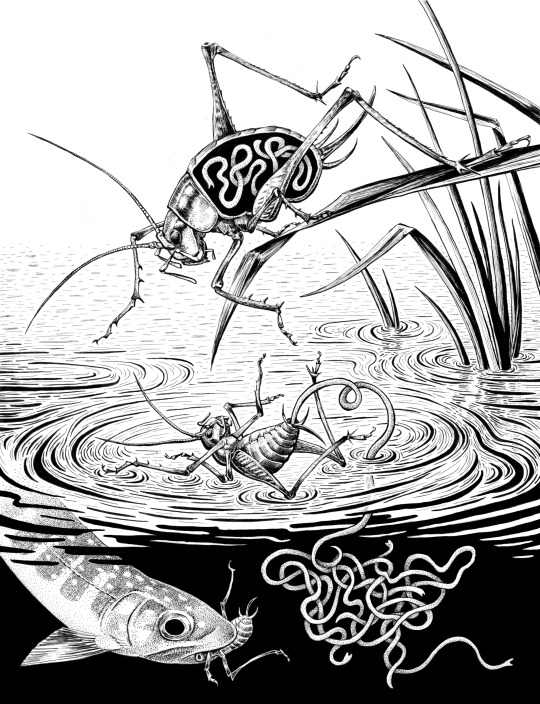
This was one of my final projects from last quarter, a story about Nematomorphs.
The phylum Nematomorpha (also called horsehair worms or Gordian worms) are small freshwater worms found all over the world. They live as parasites growing inside of larger arthropods such as grasshoppers, crickets, and mantises. When the worm reaches adulthood, it is able to alter the behavior of its host, compelling it to jump into water. There, the horsehair worm emerges from its host and lives the rest of its life as a free-swimming adult. Remarkably, the insect hosts are capable of surviving this process—if they don’t drown or get eaten by a hungry fish.
2 notes
·
View notes
Text
Phylum Round 1
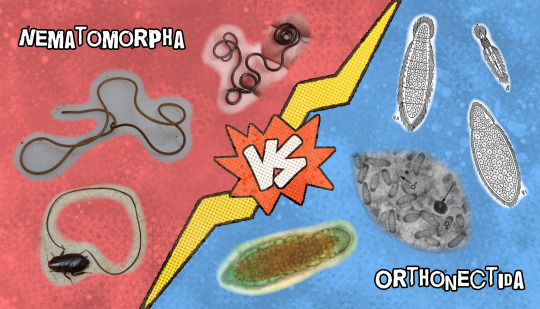
Nematomorpha: Horsehair Worms. Until adulthood, all Horsehair Worms are parasites of various insect species. They are mostly freshwater, with a few saltwater species. As the larvae grow into adulthood, many can alter the behavior of their insect hosts by compelling them to fall into bodies of freshwater. When it senses water, the adult worm emerges to spawn. These parasites are important in controlling insect populations, and in some cases, providing a food source for fish. Without them, the effects would cascade down the food chain and lead to shifts in the ecosystem's balance.
Orthonectida: Simple, yet poorly-understood wormlike parasites surrounded by hair-like cilia. Their hosts are generally invertebrates, both freshwater and saltwater. Unlike many other parasites, adult Orthonectids will leave the host when ready to reproduce, and will spawn in the open, independent of the host. The resulting larvae are covered in cilia to help them swim to find a new host. Once a new host is found, the larva will separate asexually into the next generation of Orthonectids.
#cw parasites#cw insects#nematomorpha#orthonectida#animal bracket#tumblr bracket#bracket tournament#poll bracket#phylum round 1#phylum
59 notes
·
View notes
Video
youtube
We found these in our garden during a rainy morning in late spring. They were scattered under a plum tree but we collected them into a pile to get photos and video. Not sure what species these are but they most resemble nematodes in the Mermithidae family. They resemble horsehair worms (Nematomorpha) but there are no bodies of water nearby. They may be a species in the Mermis genus and like horsehair worm, they are parasites of insects. Their behavior resembles Mermis nigrescens but there are few grasshoppers (their common hosts) but we do have a lot of tree crickets in our garden. They probably had come to the soil surface to mate. Their scanning behavior is likely them sensing light to determine their direction. By noon , these worms had disappeared from the surface.
5 notes
·
View notes
Text
Introducing Life, One Phylum at a Time
Welcome to Forms and Phyla! Each day, a short presentation of one of the animal kingdom's 32 described phyla, highlighting its diversity and uniqueness!
Watch the tree of life - and the blog's profile picture - light up before your eyes, as a new facet of animal diversity is revealed each time!
Click here for the latest post (Gastrotricha, the hairybellies), or see below for the list of posts!
Ctenophora
Porifera
Placozoa
Cnidaria
Xenacoelomorpha
Echinodermata
Hemichordata
Chordata
Loricifera
Kinorhyncha
Priapulida
Nematoda
Nematomorpha
Tardigrada
Arthropoda
Onychophora
Chaetognatha
Rotifera
Micrognathozoa
Gnathostomulida
Mollusca
Entoprocta
Gastrotricha
104 notes
·
View notes
Text
Konser Pertama di Kota Bandung

Indie Playground Playlist:
Efek Rumah Kaca:
Seperti rahim ibu, kau dan aku menuju ruang hampa, putih, tiba-tiba batu, biru, mosi tidak percaya, di udara, sebelah mata, desember, cinta melulu

Fourtwnty:
Aku tenang, realita, mangu, nematomorpha, diam-diam kubawa satu, zona nyaman, hitam putih, fana merah jambu

The Panturas:
All I want, hati-hati ombak & arus kencang, sunshine, tafsir mistik, queen of the south, gurita kota

8 notes
·
View notes
